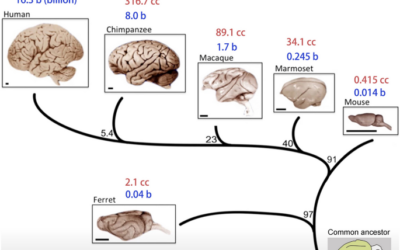How to get help for Bipolar Disorder

Bipolar Disorder in Women: Unique Symptoms, Challenges, and Treatment Meta Description: Discover the unique symptoms, challenges, and treatment considerations for women with bipolar disorder. Learn about rapid cycling, mixed episodes, hormonal influences, and more.
Bipolar disorder, a mental health condition characterized by extreme mood swings, affects both men and women. However, research suggests that women with bipolar disorder may experience distinct symptoms and face unique challenges. This comprehensive guide explores the gender-specific aspects of bipolar disorder in women and emphasizes the importance of tailored understanding and treatment.
Unique Symptoms of Bipolar Disorder in Women
Rapid Cycling
Women with bipolar disorder are more likely to experience rapid cycling, which involves having four or more mood episodes within a year. Rapid cycling can complicate treatment and increase the risk of hospitalization.
Mixed Episodes
Women are more prone to experiencing mixed episodes, where symptoms of mania and depression occur simultaneously. These episodes can be particularly distressing and are associated with a higher risk of suicide.
Severe Depressive Symptoms
Studies indicate that women with bipolar disorder tend to spend more time in depressive episodes compared to men. Depressive symptoms may be more severe and long-lasting in women.
Co-occurring Mental Health Conditions
Women with bipolar disorder have a higher likelihood of experiencing co-occurring mental health conditions, such as anxiety disorders, eating disorders, and post-traumatic stress disorder (PTSD).
Challenges Faced by Women with Bipolar Disorder
Hormonal Influences on Mood Episodes
Hormonal fluctuations throughout a woman’s life, such as during menstrual cycles, pregnancy, and menopause, can significantly impact the course and severity of bipolar disorder. These hormonal shifts may trigger mood episodes or exacerbate existing symptoms.
Stigma and Misdiagnosis
Women with bipolar disorder often face stigma and misdiagnosis. Symptoms may be dismissed as “hormonal” or “emotional,” leading to delayed diagnosis and treatment. Societal pressure to fulfill multiple roles can also make it challenging for women to prioritize their mental health.
Pregnancy and Postpartum
Challenges Women with bipolar disorder encounter unique challenges during pregnancy and the postpartum period. The risk of mood episodes is heightened during these times, and treatment decisions must consider the potential impact on the developing fetus or nursing infant.
Gender-Specific Treatment Considerations for Bipolar Disorder in Women
While treatment for bipolar disorder typically involves a combination of medication, therapy, and lifestyle modifications, gender-specific considerations should be taken into account:
- Adjustments to medication dosages may be necessary during different phases of a woman’s menstrual cycle or pregnancy.
- Therapy approaches should address the unique stressors and experiences faced by women with bipolar disorder.
- Collaborative care involving mental health professionals, gynecologists, and obstetricians is crucial for managing bipolar disorder during pregnancy and postpartum.
It’s important to recognize that individual experiences may vary, and not all women with bipolar disorder will encounter the same symptoms or challenges. Critics argue that overemphasizing gender differences may perpetuate stereotypes and overlook individual variations.
Conclusion Understanding the unique symptoms and challenges faced by women with bipolar disorder is vital for providing effective and personalized care. By raising awareness about gender-specific considerations and advocating for more research in this area, we can work towards improving the diagnosis, treatment, and support for women living with bipolar disorder. If you or someone you know is experiencing symptoms of bipolar disorder, seek professional help for an accurate diagnosis and tailored treatment plan.
Coping Strategies for Women with Bipolar Disorder
In addition to professional treatment, women with bipolar disorder can benefit from various coping strategies:
- Developing a support system of family, friends, and peers who understand the challenges of bipolar disorder.
- Practicing self-care activities, such as regular exercise, healthy eating, and stress-reduction techniques like meditation or yoga.
- Keeping a mood diary to track symptoms, triggers, and the effectiveness of treatment.
- Educating themselves about bipolar disorder and advocating for their own mental health needs.
- Joining support groups or online communities specifically for women with bipolar disorder.
Importance of Early Intervention and Ongoing Care
Early diagnosis and intervention are crucial for managing bipolar disorder effectively. Women who suspect they may have bipolar disorder should seek professional help promptly. Ongoing care, including regular check-ins with mental health providers and adjustments to treatment plans as needed, is essential for long-term stability and well-being.
Future Research and Advocacy While progress has been made in understanding the gender-specific aspects of bipolar disorder, more research is needed to further elucidate the unique experiences of women with this condition. Advocating for increased funding, awareness, and support for women with bipolar disorder is crucial to improving outcomes and quality of life.
Understanding the unique symptoms and challenges faced by women with bipolar disorder is vital for providing effective and personalized care. By raising awareness about gender-specific considerations, promoting early intervention, and advocating for ongoing support, we can work towards improving the lives of women living with bipolar disorder. If you or someone you know is experiencing symptoms of bipolar disorder, seek professional help for an accurate diagnosis and tailored treatment plan.
Bibliography
- American Psychiatric Association. (2013). Diagnostic and statistical manual of mental disorders (5th ed.). https://doi.org/10.1176/appi.books.9780890425596
- Arnold, L. M. (2003). Gender differences in bipolar disorder. Psychiatric Clinics of North America, 26(3), 595-620. https://doi.org/10.1016/S0193-953X(03)00036-4
- Blehar, M. C., DePaulo, J. R., Gershon, E. S., Reich, T., Simpson, S. G., & Nurnberger, J. I. (1998). Women with bipolar disorder: Findings from the NIMH Genetics Initiative sample. Psychopharmacology Bulletin, 34(3), 239-243.
- Diflorio, A., & Jones, I. (2010). Is sex important? Gender differences in bipolar disorder. International Review of Psychiatry, 22(5), 437-452. https://doi.org/10.3109/09540261.2010.514601
- Freeman, M. P., Smith, K. W., Freeman, S. A., McElroy, S. L., Kmetz, G. E., Wright, R., & Keck, P. E. (2002). The impact of reproductive events on the course of bipolar disorder in women. The Journal of Clinical Psychiatry, 63(4), 284-287. https://doi.org/10.4088/jcp.v63n0403
- Kawa, I., Carter, J. D., Joyce, P. R., Doughty, C. J., Frampton, C. M., Wells, J. E., Walsh, A. E., & Olds, R. J. (2005). Gender differences in bipolar disorder: Age of onset, course, comorbidity, and symptom presentation. Bipolar Disorders, 7(2), 119-125. https://doi.org/10.1111/j.1399-5618.2004.00180.x
- Leibenluft, E. (1997). Women with bipolar illness: Clinical and research issues. The American Journal of Psychiatry, 154(2), 163-173. https://doi.org/10.1176/ajp.154.2.163
- National Institute of Mental Health. (2017). Bipolar disorder. https://www.nimh.nih.gov/health/statistics/bipolar-disorder
- Parial, S. (2015). Bipolar disorder in women. Indian Journal of Psychiatry, 57(Suppl 2), S252-S263. https://doi.org/10.4103/0019-5545.161488
- Viguera, A. C., Whitfield, T., Baldessarini, R. J., Newport, D. J., Stowe, Z., Reminick, A., Zurick, A., & Cohen, L. S. (2007). Risk of recurrence in women with bipolar disorder during pregnancy: Prospective study of mood stabilizer discontinuation. The American Journal of Psychiatry, 164(12), 1817-1824. https://doi.org/10.1176/appi.ajp.2007.06101639
Types of Therapy




0 Comments